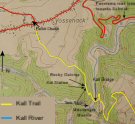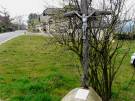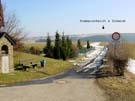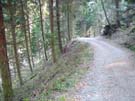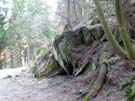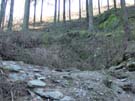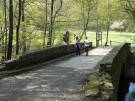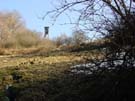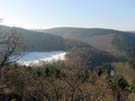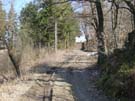In the initial battle plan for the 28th Division, the Kall Trail was designated the divisional main supply route, and as axis of advance for the operation.
In retrospect, it can be seen that the trail was totally unsuited for the amount of traffic required, and was ultimately one of the main reasons the American attack failed.
0900, 2 November: First US Attack
At 0900, 2 November, the lead elements left their positions in the town of Germeter, and advanced over open ground to the handful of German troops defending Vossenack. The initial US plan called for the 2/112 Infantry to seize Vossenack, and for the 1/112th to move by Vossenack to the south to capture the bridge over the Kall River.
2/112th took Vossenack with little loss, but the lead company of 1/112th was held up by strong resistance after jumping off at noon. The day ended with Vossenack firmly in US hands, but with 1/112th stuck close to its jump off position.
0800, 3 November: The Attack on Schmidt
While the successful capture of Vossenack the previous day earned praise from the 28th Division commander, Major General Cota, the failure of 1/112 to cross the Kall, or even advance much past Germeter, was disappointing. The next day, 3/112 was chosen to lead the next attempt. The new plan called for a movement through Vossenack, bypassing the defended woods, to cross the Kall at the Mestrenger Muhle and then move on Schmidt. 1/112, less B Company, would follow the 3rd Battalion, and A/707th Tank Battalion was to support the entire operation. This time, the attack was startlingly successful, with the German defenders in Schmidt caught by surprise and driven out handily.
0700, 4 November: Counterattack at Schmidt
At dawn on 4 November, the German forces launched a powerful counterattack designed to recapture Schmidt. Three battalions of German infantry supported by 17 Panther tanks, assaulted the American positions from several directions, overwhelming the lone US battalion defender. By 1100, the remnants of 3/112 were regrouping in Kommerscheidt and the German 1055th consolidated in Schmidt.
1300, 4 November: The First Counterattack at Kommerscheidt
After their success at Schmidt, the German 1055th Infantry prepared to push on to take Kommerscheidt. By 1300, 4 November, the US defenders (1/112th) reported German armor and infantry approaching their positions.
Three Shermans, commanded by the ever-alert Lt. Fleig, and the remnants of 3/112 aided the defense of Kommerscheidt. The Germans were repulsed with some loss. As dusk fell, US troops across the Kall prepared for further German attacks which were expected at dawn.
0700, 5 November: The Second Attack on Kommerscheidt
After being repulsed at Kommerscheidt on the afternoon of the 4th, the 1055th Infantry made a second attempt to capture the town. Again supported by 116th Panzer tanks, the Germans stepped off from Schmidt for another try.
0600, 6 November: Attack on Vossenack
While the fighting raged on the other side of the Kall, the 2/112 held Vossenack. By the 6th of November, continuous pounding by artillery had worn down the endurance of the men of the 2/112, and they seemed prone to panic. That morning, German artillery fired a particularly heavy barrage in preparation for an assault. This shelling proved to be too much for the Americans to bear, and they routed back through the town. The 60th Panzergrenadiers quickly followed seizing half of Vossenack before a scratch US force of tanks and infantry put a halt to further advances.
1300, 6 November: Return to Vossenack
With the rout of 2/112, German troops were poised to completely isolate the rest of the 112th Regiment on the other side of the Kall. In desperation, the 28th Division HQ committed all remaining reserves to a counterattack aimed at retaking Vossenack. Unfortunately, only two companies of US engineers, A and C, 146 Eng Bn, were at hand. The counterattack was duly ordered for the engineers and the various armored elements which were still available. The American forces failed to recapture the town, but the engineers did manage to contain the Germans east of the Church, preserving the precarious supply line over the Kall.
Task Force Ripple
Task Force Ripple, named for LTC Richard Ripple the battalion commander of the 707th, was created by General Cota to retake Schmidt. The 3/110th was moved to Kommerscheidt where it would launch its effort to retake the objective. Support was to be provided by two companies of the 707th, as well as elements of the 893rd TD.
The attack was scheduled to begin at 1200, 6 November. Unfortunately, various events interfered with Ripple's attack. Due to the fighting in Vossenack, no more tanks crossed to Kall, and instead of almost four armored companies, only eight M4's and seven M10's were available.
Furthermore, the 3/110 had less than 300 men and was in no condition to attack. At the last minute, the operation was cancelled by the decision of LTC Ripple, and 3/110th joined the defense of Kommerscheidt.

Pleaze click a thumbnail to show the larger image.


